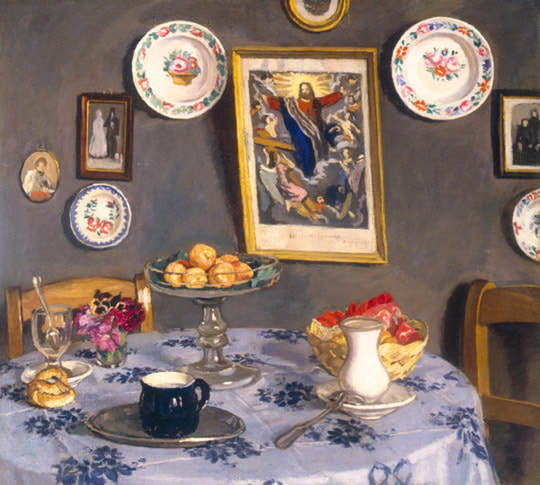Adolf Fényes: Charming Simplicity
Adolf Fényes, originally Fischmann (1867-1945), was a Hungarian painter of Jewish ancestry. As was the case with many Hungarian Jewish intellectuals and artists, Fényes was drawn to communism after the First World War and became an active member of Béla Kun's, originally Kohn, short-lived Hungarian Soviet Republic, in which he served as a member of the "Artistic Executive Committee."
Fényes's attraction to and involvement in the failed, oppressive Hungarian Soviet Republic haunted him for the remainder of his life. Though he was granted reprieves and exemptions by the Horthy Regime, Fényes's communist past and Jewish ancestry made him a marked man as World War II unfolded.
Toward the end of the Second World War, the Arrow Cross Party - who had by that time forced Horthy from power - interned Fenyés and most of Budapest's Jews into the Budapest Ghetto. Fényes barely survived the Siege of Budapest and died shortly afterward. Some sources claim he died in hospital after suffering a stroke; others claim he succumbed to hunger in the Hungarian capital in the aftermath of the 50-day battle that reduced most of Budapest to rubble.
As for Fényes's paintings, I appreciate the charming simplicity of his folk compositions; particularly his still lifes, which remind me of scenes I used to encounter whenever I visited the houses of grandparents and other older relatives during my childhood trips to Hungary. Brother and Sister - 1906
Brother and Sister - 1906  Sunday Afternoon - 1910
Sunday Afternoon - 1910  Poppy Strudel - 1910
Poppy Strudel - 1910
Fényes's attraction to and involvement in the failed, oppressive Hungarian Soviet Republic haunted him for the remainder of his life. Though he was granted reprieves and exemptions by the Horthy Regime, Fényes's communist past and Jewish ancestry made him a marked man as World War II unfolded.
Toward the end of the Second World War, the Arrow Cross Party - who had by that time forced Horthy from power - interned Fenyés and most of Budapest's Jews into the Budapest Ghetto. Fényes barely survived the Siege of Budapest and died shortly afterward. Some sources claim he died in hospital after suffering a stroke; others claim he succumbed to hunger in the Hungarian capital in the aftermath of the 50-day battle that reduced most of Budapest to rubble.
As for Fényes's paintings, I appreciate the charming simplicity of his folk compositions; particularly his still lifes, which remind me of scenes I used to encounter whenever I visited the houses of grandparents and other older relatives during my childhood trips to Hungary.
 Brother and Sister - 1906
Brother and Sister - 1906  Sunday Afternoon - 1910
Sunday Afternoon - 1910  Poppy Strudel - 1910
Poppy Strudel - 1910
Published on February 14, 2021 11:11
No comments have been added yet.



